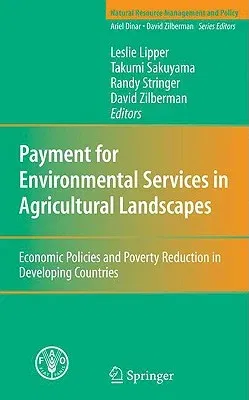Payment for Environmental Services in Agricultural Landscapes: Economic Policies and Poverty Reduction in Developing Countries (2009)Hardcover - 2009, 2 December 2008

Qty
1
Turbo
Ships in 2 - 3 days
In Stock
Free Delivery
Cash on Delivery
15 Days
Free Returns
Secure Checkout

Part of Series
Natural Resource Management and Policy
Print Length
284 pages
Language
English
Publisher
Springer
Date Published
2 Dec 2008
ISBN-10
0387729690
ISBN-13
9780387729695
Description
Product Details
Book Edition:
2009
Book Format:
Hardcover
Country of Origin:
US
Date Published:
2 December 2008
Dimensions:
23.62 x
15.49 x
2.03 cm
Genre:
Ecology
ISBN-10:
0387729690
ISBN-13:
9780387729695
Language:
English
Location:
New York, NY
Pages:
284
Publisher:
Weight:
566.99 gm